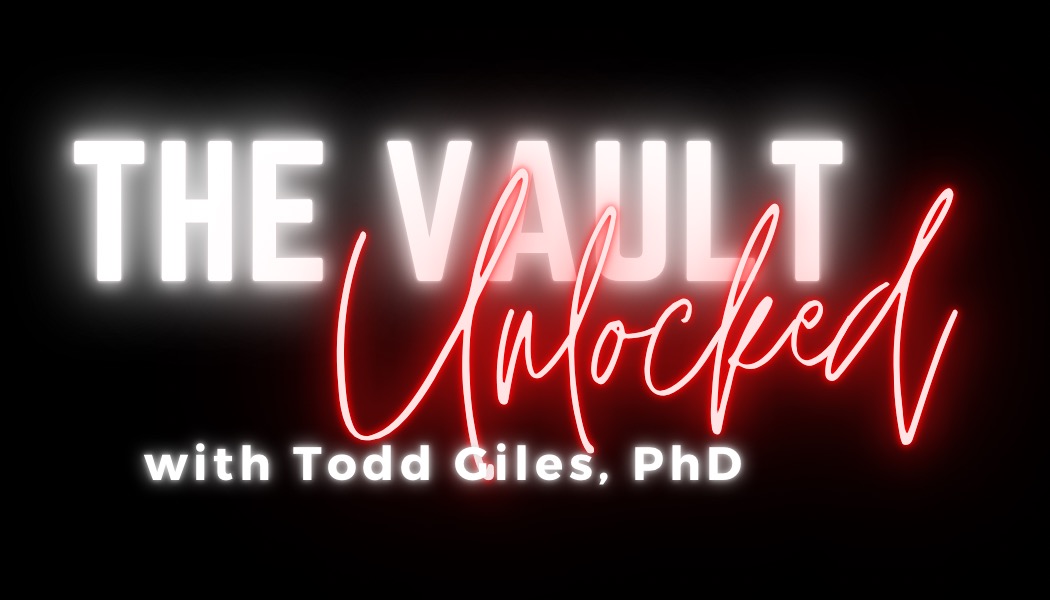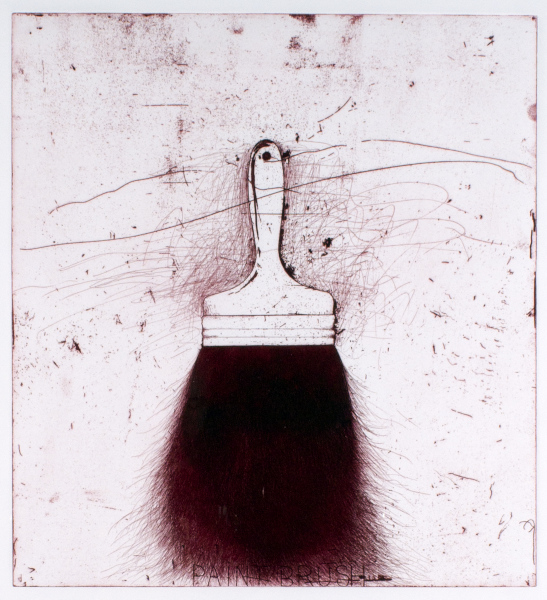
Ever wonder where the art is stored at the WFMA, and what's in there anyway? Join MSU professor Todd Giles as he unlocks the vault!

Jim Dine
Red Beard, 1973
Etching
41 ¾” x 30 ¾”
Signed & numbered 24/50
Published by Petersburg Press, New York & London
Museum purchase assisted by the National Endowment for the Arts, 1975
Draftsman, poet, sculptor, and photographer, Jim Dine (b. 1935) is best known for his large-scale paintings of bathrobes, hearts and tools that became Pop art icons in the 1960s and 1970s. He is also one of the most prolific printmakers of his generation, with over 1200 prints to his name. Dine first garnered notice for his Happenings in the early 1960s in New York with Claes Oldenburg, John Cage, and Allan Kaprow. However, it was the seminal exhibition in Pasadena, CA in 1962—New Paintings of Common Objects—where Dine, along with the then little-know Wayne Thiebaud, Roy Lichtenstein and Andy Warhol, really began to make the Abstract Expressionist-saturated art world sit up and take notice. The next year, the Guggenheim in New York hosted Dine, Lichtenstein, Warhol, Robert Rauschenberg, James Rosenquist, and Jasper Johns in an exhibition titled Six Painters and the Object, all of whom are represented in the WFMA’s permanent collection.
One of the major traits of Pop art is its engagement with serialism, the practice of creating individual artworks over time as part of a larger suite or series of works—Dine’s abovementioned hearts and robes come to mind, as do Warhol’s Campbell’s Soup Cans and Tom Wesselmann’s Great American Nudes. While Dine’s bathrobes are surely his most iconic images, his tool series, oddly, might be where we see the artist at his most intimate. Tools intimate? What about his hearts and self-portraits? And what, really, could be more intimate than a bathrobe? Hammers, hand saws, pliers, sledgehammers—really?
When his mother passed away, the then 12 year old Jim Dine had to move in with his maternal grandparents. As a child, young Jim spent his free time working in his grandfather’s hardware store; it was here that he grew to appreciate the tactile and aesthetic beauty of hand tools. And really, for an artist, what is more intimate then the tools of their trade—paint brushes, chisels, awls, scissors? As Dine said in a 2010 interview with Clifford Ackley, “I would just play with these objects of desire, like a hammer, or I’d grab a screwdriver and pretend to be an adult. I thought they were so beautiful. It was a nonverbal thing” (10).
Dine produced several etchings of the tools of his trade in the early 70s. According to Dine scholars Clifford Ackley and Patrick Murphy, the prints that deal with tools do so “in a very personal, somewhat magical fashion.” In Five Paintbrushes (1973), for example, “the brushes of varied width are suspended in an indeterminate space and the hairs of the brushes seem to twitch with life, as if about to grow.” As was the case with the six progressive iterations the etching plate for Five Paintbrushes evolved through, Dine also reworked the plate for another etching from this period—Paintbrush (1971) morphed into Black Beard (1973) and then again into Red Beard that same year. That is, the shorter bristles of Paint Bush “grew,” like Dine’s own “big black beard in 1972,” into the fuller, more unruly brush in the two “Beard” prints, until its longer bristles all but covered the work’s title at the bottom of the etching. Dine humorously referred to Black Beard as “a kind of self-portrait” (34).
Whether it’s the surrealistically be-haired anthropomorphic end-cutting nippers, locking pliers, or flat multi-function bicycle wrench of Thirty Bones of My Body (1972), or the Big Red Wrench in a Landscape (1973), Dine’s tools, while depicted with draftsman-like precision, seem to take on a sort of Dine-centric autobiographical life of their own when surrounded by the splotches, scrapes, scribbles and splatters of their creator’s printmaking tools. Indeed, Dine’s prints celebrate his artistic energies in that their execution is very physical, very hands-on; his bold, graphic style, along with his subject matter, can be characterized as more personal than that of his fellow Pop artists and is more akin in many ways to the dynamism of his Action Painter predecessors, placing him in closer relation to his neo-Dadaist colleagues Rauschenberg and Johns than to Pop practitioners like Thiebaud and Lichtenstein.
Works Consulted
Ackley, Clifford and Patrick Murphy. Jim Dine Printmaker: Leaving My Tracks. MFA Publications. Boston: Museum of Fine Arts, MFA Publications, 2012.
Adams, Clinton. “Fifty Years: Some Thoughts about Lithography, 1948-1998.” Tamarind: Forty Years. Ed. Marjorie Devon. U of New Mexico P, 2000. 61-75.
Castleman, Riva. Prints of the Twentieth Century: A History. New York: Museum of Modern Art, 1976.
Sparks, Esther. Universal Limited Art Editions, A History and Catalogue: The First Twenty-Five Years. New York: Harry N. Abrams, Inc., Publishers, 1989.
Red Beard from the Permanent Collection of the Wichita Falls Museum of Art at MSU Texas
View Previous The Vault Unlocked
-
Tuesday - Friday
10:00AM - 5:00PMSaturday
1:00PM - 5:00PM